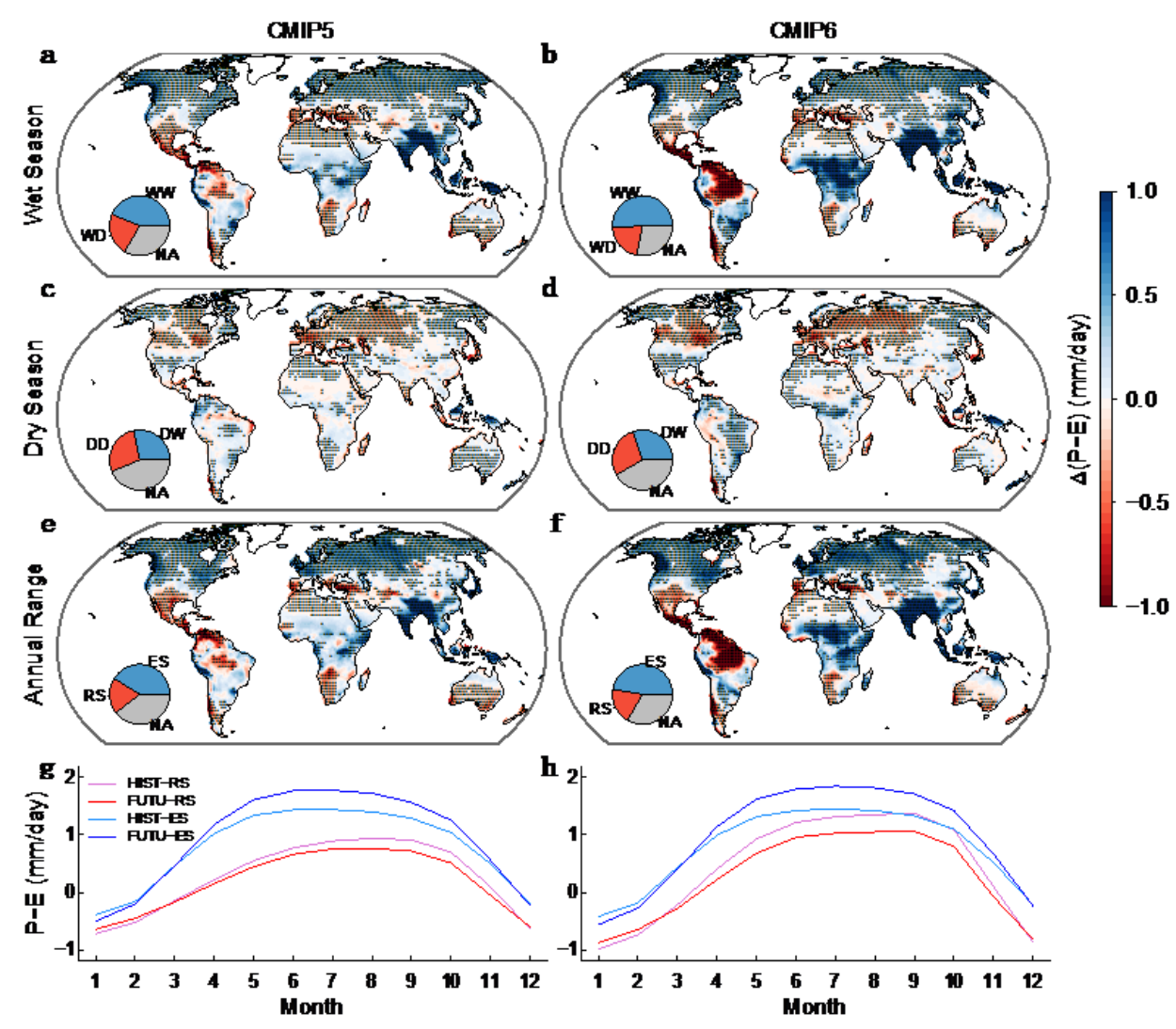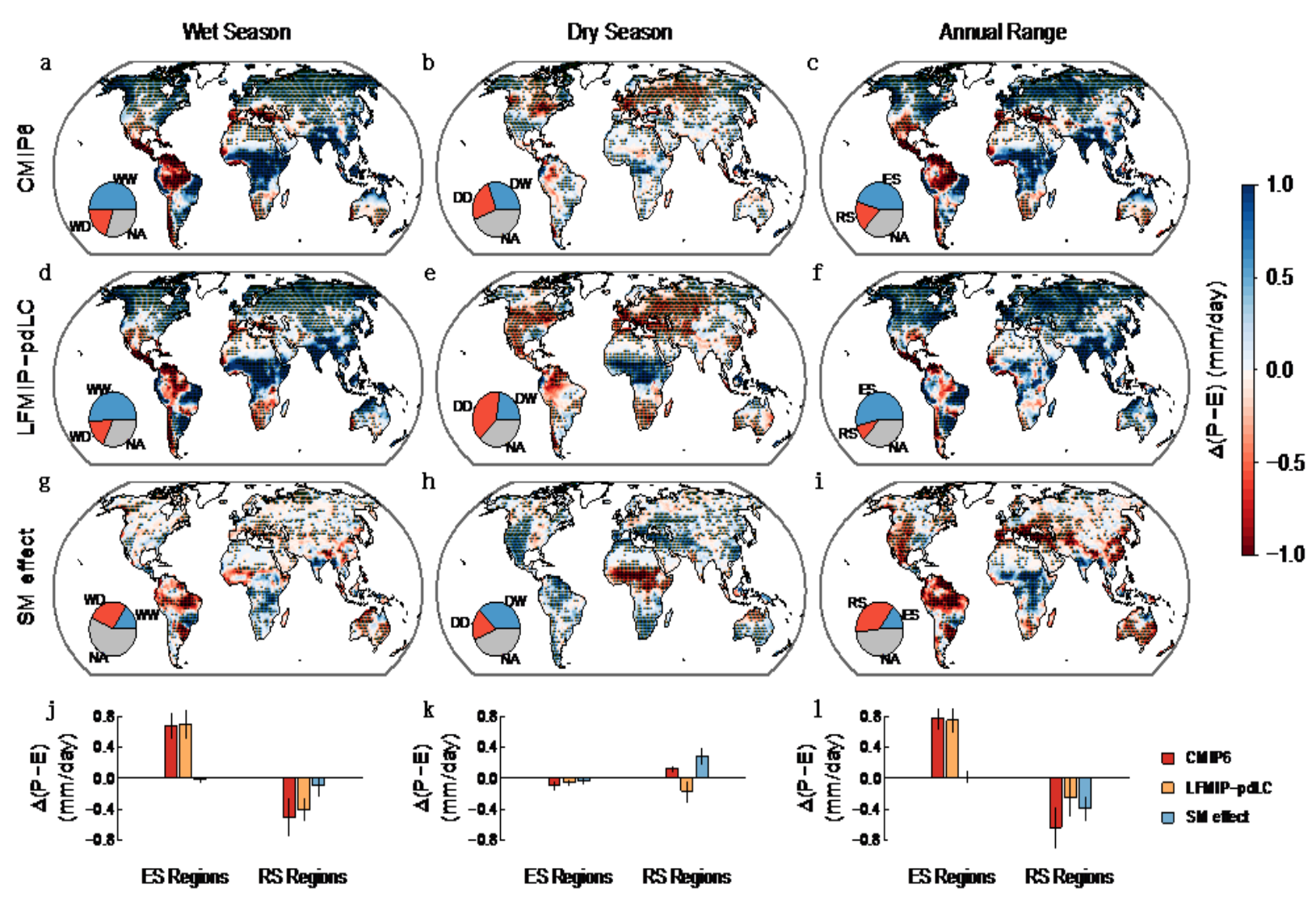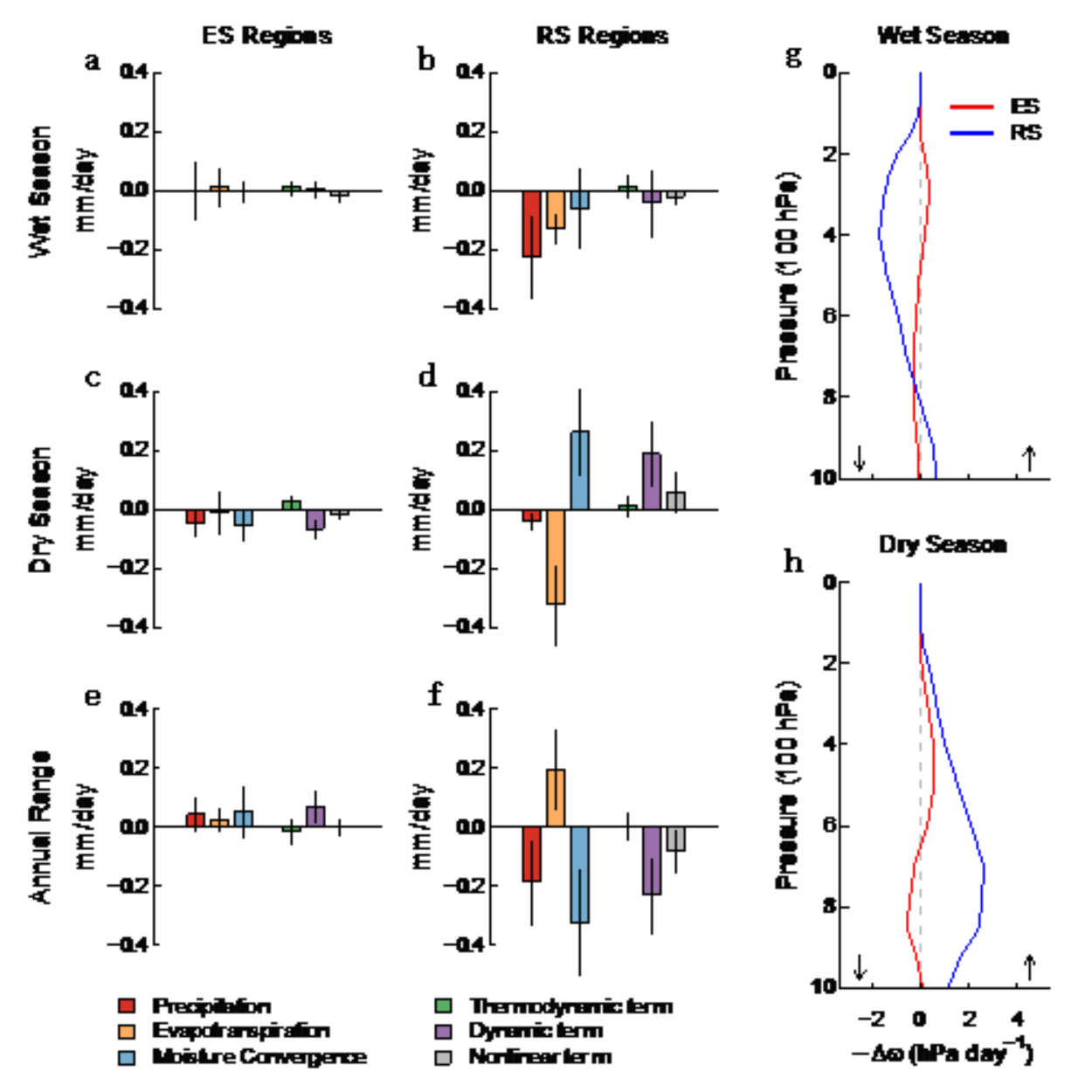Zhou Sha from Faculty of Geographical Science Publishes an Article in Nature Communications
On 30 September, a research by Associate Professor Zhou Sha and his team was published online in Nature Communications, which found that the global surface water availability in the subtropical regions and the Amazon shows a trend of "wet seasons becoming drier and dry seasons becoming wetter ", mainly driven by seasonally varying soil moisture(SM) feedbacks on surface water availability (precipitation minus evaporation, P-E).
Using multi–model simulations from CMIP5 and CMIP6 projections, the study finds that the seasonal variability of surface water availability will increase significantly in many terrestrial regions in the future, i.e. ‘wet get wetter, dry get drier’ (WWDD) mechanism, in line with thermodynamic theory. However, about 20% of the terrestrial regions show a weakening of the seasonal variability of 'dry season to wet, wet season to dry', mainly in the dry subtropical and Amazonian regions. However, about 20% of the land area shows a weakening of the seasonal variability of 'wet seasons becoming drier and dry seasons becoming wetter', mainly in the subtropical and Amazonian regions.

Fig. 1 Multi–model mean seasonal changes in water availability in CMIP5 and CMIP6.
(a-f) Seasonal variability characteristics of P-E under future high emission scenarios.
Blue/Red represents enhanced/reduced seasonality(ES/RS) of P–E.
(g-h)Seasonal variation curves of P-E for historical and future periods
(horizontal axis 1 indicates the first month of the dry season).
This study combines land–atmosphere coupling experiments with an empirical statistical model to systematically investigate the mechanisms by which soil moisture feedback affect seasonal changes in surface water availability in the subtropical region and Amazon. The study finds that the global warming contributes to the reduction of surface water availability and soil water in the wet and dry seasons in these regions. In the dry season, the reduction in soil water attenuates the evaporative cooling effect through the land-atmosphere feedback, raising surface temperatures and further enhancing the thermal and barometric differences between land and sea, thereby promoting regional atmospheric upward movement and greatly increasing the water vapour delivered to the dry subtropical and Amazonian regions. This kinetic mechanism of soil moisture feedback counteracts the effects of climate change, resulting in an upward trend in surface water availability during the dry season. However, in the wet season, the effect of soil water reduction on evaporation and atmospheric water vapour transport is weaker and surface water availability tends to decrease. Statistics show that seasonal differences in soil moisture feedback contribute up to 63% to the reduction in seasonal variability of surface water availability in the dry subtropical and Amazonian regions, while other factors such as climate change contribute 37%. The soil moisture feedback kinetic mechanism effectively explains the key reason for the difference between the thermodynamic dry and wet change theory and the seasonal variation in surface water availability in global climate models.

Fig. 2: Multi-model mean seasonal changes in soil moisture in CMIP5 and CMIP6.
(a-c) Characteristics of future P-E seasonal variability in the CMIP6 model
(d-f) Effects of non-soil water factors such as climate change on P-E seasonal variability
(soil water trends and seasonal variability held constant in the LFMIP-pdLCland–atmosphere coupling experiments)
(g-i) Effects of soil water-atmosphere feedbacks on P-E seasonal variability
(j-l) Seasonal variability enhancement (ES) and diminished (RS) area-weighted average P-E seasonal variability characteristics and their influence by climate change and soil water-atmosphere feedbacks.

Fig. 3: Soil moisture effects on water availability in the wet and dry seasons in CMIP6.
(a-f) The effect of soil water on P-E and its thermodynamic and kinetic mechanisms.
(g-h) Effect of soil water variability on the atmospheric vertical rise rate (-w).
Es and RS indicate the regions of enhanced and diminished seasonal variability, respectively, in Fig. 2c.
Associate Professor Zhou Sha from the Department of Geographical Sciences, Beijing Normal University is the first author and corresponding author of the paper. This is another important research result in the seasonal change mechanism of surface water availability in arid areas, based on Zhou Sha's discovery in 2021 (Zhou et al., 2021, Nature Climate Change) that soil moisture feedbacks slow down the long-term decline of surface water availability in arid areas. The new research has important implications for the understanding of dry and wet change patterns in terrestrial arid areas under the context of climate change.
Link:
https://www.nature.com/articles/s41467-022-33473-9


